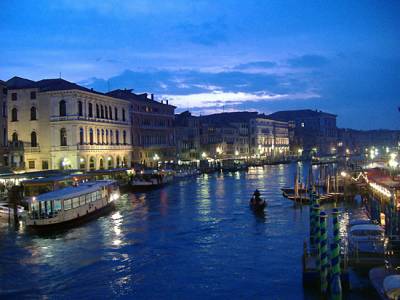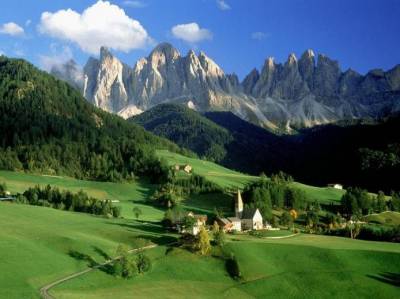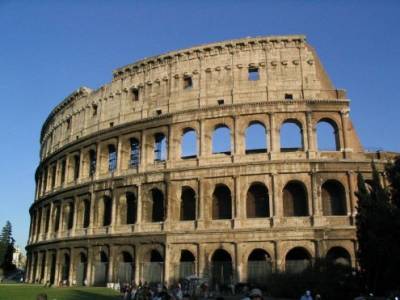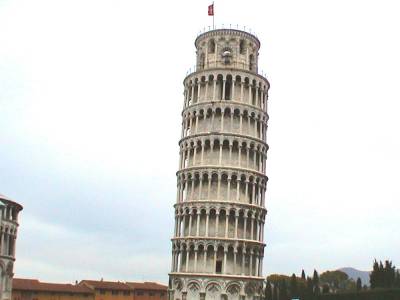Italy


Italy
As you know, Italy - one of the most popular on the attendance of world tourism, and its force of attraction is so great that tourists around the world turn a blind eye to the cost of imposing the hospitality of local residents. Has long been noted that Italy is living its attractive atmosphere, which is saturated with fluids, it would seem, the very air, and life in the country is cheerful and sociable, as well as the people themselves. Italians have always distinguished the strength of character, vitality, ambition, but most importantly - Italian cuisine. That there is a pizza! And the lasagna? A pasta ... Yum!
But Italy is not only known for its cuisine, but also the beauty of the resort. Every tourist, planning a vacation in Italy, finds himself something of his own: and visit the monuments, which invariably can be traced to the love of wealth and national culture, and photography in the lap of nature.
Nature Italii

Italy is located within the forest zone, temperate zone in the north and the subtropical zone in the south. The main influence on the formation of the nature of Italy, especially in shaping the climate influences of the sea, even the deepest parts of the country are no more than 200-220 km. from the coast.
On the nature of Italy and the diversity of its landscapes is also affected by a large, respect of the total area, the elongation of its territory in the north-west to south-east, and the dominance of the hilly landscape of the mountain, one of the most characteristic features of the nature of the country - wide development of volcanic and seismic processes, and well as modern movements of land due to the fact that Italy is situated in the youngest Alpine folding.
North, a very tortuous land border of Italy almost all over the place along the ridges of the Alps, but is only 20% of the Italian borders being mostly sea country, and from 9.3 thousand kilometers. its borders accounted for 80% of the sea. In the continental part of Italy is separated from the rest of Europe's highest mountain ranges of the Alps. Deflected to the north-west of the giant arc of the Alps stretches from west to east for 1,200 km., The highest, the western portion of the ancient Hercynian massif, composed of crystalline rocks of the origin, along with the crystalline rocks in the central and, especially in the Eastern Alps, widespread limestones.
It was here that are the highest peaks of the Alps: Mont Blanc (4807 m), Monte Rosa (4,634 m), Cervinia (4478 m). The vertices of these mountains are covered with thick ice. To the south of the Alps down to a thousand meters above sea level (Alpes Maritimes). To the east a chain of mountains divergent fan, and their height is reduced to two thousand meters (Carnic Alps). Alps mountain ranges cut by numerous valleys and mountain passes that are available throughout the year and closing for a short time in the winter, the mountain passes are roads and railways, in some places the mountains pierced tunnels.
The coastline is broken up in Italy is relatively small, convenient little coves, almost all the large ports of artificially constructed only in the southern part of the country there are ports in the natural coves and bays such ports include Naples, Salerno and Taranto, Cagliari. The elongation of the Italian territory from north to south is great climatic differences between regions - from the temperate climate of warm plain to Padansky pronounced subtropical in Sicily.
In fact the Mediterranean climate can only be described peninsular and insular Italy. Climate Padansky plains with the same hot summer, as well as on the Apennine Peninsula, but with a cold and foggy in the winter can be considered as transitional from subtropical to temperate. Here the influence of the warm Ligurian Sea impede the Maritime Alps and the Apennines, at the same time here more easily penetrate the cold air from the Adriatic. The average January temperature in the Padansky plain - about 0 °, and in July - +23-24 °. In the autumn this is actively formed cyclones. In winter, the snow always falls, are often cold to 10 °. From 600 - 1000 mm annual rainfall accounts for half of the spring and summer. Frequent in Northern Italy are strong, even catastrophic downpours. Summer rains are often accompanied by thunderstorms and hail. The climate varies with altitude of the Alps from moderately warm to cool. In the mountains, the snow lasts several months, and on the tops of the mountains never melts.
Most of the lakes of Italy in the foothills and mountains of the Alps and the Adriatic coast. This is a large, square up to 370 square meters. km, glacial ponds, with depths over 400 m Lake basins are mild and healthy climate. The shores of Alpine lakes are famous resorts of world importance.
The lakes are located near the Adriatic coast - is blocked by sandbars former lagoon. They are small, the water is salty. The lakes of central Italy - Bolsena, Vico, Albano, Nemi, Lake Bracciano are the result of water filling the craters of some extinct volcanoes.
Sightseeings Italii
Kolizey

Colosseum - so we now call the amphitheater of Flavius built with 72 to 80 years. The amphitheater could seat 50,000 spectators who gathered to watch the famous games that included fights of gladiators, the hunting of wild animals and sea battles, for whom the arena was filled with water. To accomplish this, the Romans used all of their technical knowledge and construction skills - in case of rain or excessive heat of the Coliseum with a special device is pulled huge tent, and under the cover of the arena was a complex underground structure, where there were a variety of technical devices for game and corridors for the gladiators and wildlife. The Colosseum was destroyed by earthquakes and pillaged many people to decorate their palaces, but even now it amazes us with its grandeur.
Leaning bashnya

The famous 'leaning' tower (Torre Pe'ldente) - the bell tower (Campanile) in the Cathedral of Pisa, a part of its rare beauty of the architectural ensemble consisting, in addition to the bell tower and the cathedral, another of the chapels for baptism (baptistery) and cemeteries. If the 'incident' tower does not heel, and stood vertically, like all the other towers in the world, thanks to its limited, probably only a narrow range of architects and historians. Due to its design flaw as it is known throughout the world. The tower reaches a height of 55 meters, and the inscription on it shows that she founded in 1174. But as the calendar of Pisa, as it turned out, one year ahead of the conventional and real date of commencement of construction should be considered in 1173. Architects, the towers were in Bonn Pisano and Wilhelm von Innsbruck, but both of them were not destined to see the final completion of his plan. By the way, until the second half of the XIV century the tower was without its crowning belfry. It has been suggested that the curvature of the tower was originally conceived by the architects - for the sake of demonstrating their prowess and remarkable architectural skill. But this hypothesis is not very plausible. Much more likely something else: the architects know that building on a very insecure foundations, and therefore put into the building structure the ability to easily reject
As you know, Italy - one of the most popular on the attendance of world tourism, and its force of attraction is so great that tourists around the world turn a blind eye to the cost of imposing the hospitality of local residents. Has long been noted that Italy is living its attractive atmosphere, which is saturated with fluids, it would seem, the very air, and life in the country is cheerful and sociable, as well as the people themselves. Italians have always distinguished the strength of character, vitality, ambition, but most importantly - Italian cuisine. That there is a pizza! And the lasagna? A pasta ... Yum!
But Italy is not only known for its cuisine, but also the beauty of the resort. Every tourist, planning a vacation in Italy, finds himself something of his own: and visit the monuments, which invariably can be traced to the love of wealth and national culture, and photography in the lap of nature.
Nature Italii

Italy is located within the forest zone, temperate zone in the north and the subtropical zone in the south. The main influence on the formation of the nature of Italy, especially in shaping the climate influences of the sea, even the deepest parts of the country are no more than 200-220 km. from the coast.
On the nature of Italy and the diversity of its landscapes is also affected by a large, respect of the total area, the elongation of its territory in the north-west to south-east, and the dominance of the hilly landscape of the mountain, one of the most characteristic features of the nature of the country - wide development of volcanic and seismic processes, and well as modern movements of land due to the fact that Italy is situated in the youngest Alpine folding.
North, a very tortuous land border of Italy almost all over the place along the ridges of the Alps, but is only 20% of the Italian borders being mostly sea country, and from 9.3 thousand kilometers. its borders accounted for 80% of the sea. In the continental part of Italy is separated from the rest of Europe's highest mountain ranges of the Alps. Deflected to the north-west of the giant arc of the Alps stretches from west to east for 1,200 km., The highest, the western portion of the ancient Hercynian massif, composed of crystalline rocks of the origin, along with the crystalline rocks in the central and, especially in the Eastern Alps, widespread limestones.
It was here that are the highest peaks of the Alps: Mont Blanc (4807 m), Monte Rosa (4,634 m), Cervinia (4478 m). The vertices of these mountains are covered with thick ice. To the south of the Alps down to a thousand meters above sea level (Alpes Maritimes). To the east a chain of mountains divergent fan, and their height is reduced to two thousand meters (Carnic Alps). Alps mountain ranges cut by numerous valleys and mountain passes that are available throughout the year and closing for a short time in the winter, the mountain passes are roads and railways, in some places the mountains pierced tunnels.
The coastline is broken up in Italy is relatively small, convenient little coves, almost all the large ports of artificially constructed only in the southern part of the country there are ports in the natural coves and bays such ports include Naples, Salerno and Taranto, Cagliari. The elongation of the Italian territory from north to south is great climatic differences between regions - from the temperate climate of warm plain to Padansky pronounced subtropical in Sicily.
In fact the Mediterranean climate can only be described peninsular and insular Italy. Climate Padansky plains with the same hot summer, as well as on the Apennine Peninsula, but with a cold and foggy in the winter can be considered as transitional from subtropical to temperate. Here the influence of the warm Ligurian Sea impede the Maritime Alps and the Apennines, at the same time here more easily penetrate the cold air from the Adriatic. The average January temperature in the Padansky plain - about 0 °, and in July - +23-24 °. In the autumn this is actively formed cyclones. In winter, the snow always falls, are often cold to 10 °. From 600 - 1000 mm annual rainfall accounts for half of the spring and summer. Frequent in Northern Italy are strong, even catastrophic downpours. Summer rains are often accompanied by thunderstorms and hail. The climate varies with altitude of the Alps from moderately warm to cool. In the mountains, the snow lasts several months, and on the tops of the mountains never melts.
Most of the lakes of Italy in the foothills and mountains of the Alps and the Adriatic coast. This is a large, square up to 370 square meters. km, glacial ponds, with depths over 400 m Lake basins are mild and healthy climate. The shores of Alpine lakes are famous resorts of world importance.
The lakes are located near the Adriatic coast - is blocked by sandbars former lagoon. They are small, the water is salty. The lakes of central Italy - Bolsena, Vico, Albano, Nemi, Lake Bracciano are the result of water filling the craters of some extinct volcanoes.
Sightseeings Italii
Kolizey

Colosseum - so we now call the amphitheater of Flavius built with 72 to 80 years. The amphitheater could seat 50,000 spectators who gathered to watch the famous games that included fights of gladiators, the hunting of wild animals and sea battles, for whom the arena was filled with water. To accomplish this, the Romans used all of their technical knowledge and construction skills - in case of rain or excessive heat of the Coliseum with a special device is pulled huge tent, and under the cover of the arena was a complex underground structure, where there were a variety of technical devices for game and corridors for the gladiators and wildlife. The Colosseum was destroyed by earthquakes and pillaged many people to decorate their palaces, but even now it amazes us with its grandeur.
Leaning bashnya

The famous 'leaning' tower (Torre Pe'ldente) - the bell tower (Campanile) in the Cathedral of Pisa, a part of its rare beauty of the architectural ensemble consisting, in addition to the bell tower and the cathedral, another of the chapels for baptism (baptistery) and cemeteries. If the 'incident' tower does not heel, and stood vertically, like all the other towers in the world, thanks to its limited, probably only a narrow range of architects and historians. Due to its design flaw as it is known throughout the world. The tower reaches a height of 55 meters, and the inscription on it shows that she founded in 1174. But as the calendar of Pisa, as it turned out, one year ahead of the conventional and real date of commencement of construction should be considered in 1173. Architects, the towers were in Bonn Pisano and Wilhelm von Innsbruck, but both of them were not destined to see the final completion of his plan. By the way, until the second half of the XIV century the tower was without its crowning belfry. It has been suggested that the curvature of the tower was originally conceived by the architects - for the sake of demonstrating their prowess and remarkable architectural skill. But this hypothesis is not very plausible. Much more likely something else: the architects know that building on a very insecure foundations, and therefore put into the building structure the ability to easily reject








